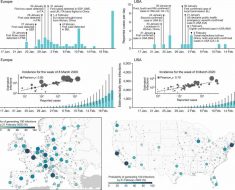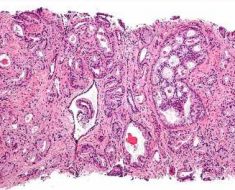
In mid-2020, faced with a rising wave of COVID-19 infections—a previously unknown disease with neither vaccine nor effective treatment—an urgent, improvised collaboration between a Melbourne hospital, a primary health network and a community health organization created a system that supported thousands of lives and ensured the city’s health care ecosystem didn’t collapse.
The multi-dimensional constructed model, which included financial, social and mental health supports, resulted in more than 80% of COVID-19 patients being treated successfully in their own homes, monitored by general practitioners (GPs), leaving hospitals free to care for the seriously ill.
Dubbed the West Metro COVID-Positive Pathway, the model was quickly adapted by other health services and is now the standard tool for pandemic management across Victoria. In a paper published online in the Medical Journal of Australia, a team of experts led by its architects say the pathway approach can now be adapted to improve management of other infectious or chronic diseases.
“The Pathway was originally designed by North Western Melbourne Primary Health Network (NWMPHN), the Royal Melbourne Hospital (RMH), and community health organization cohealth, supported by the Victorian Department of Health,” explains co-author Janelle Devereux, NWMPHN’s Executive Director for Health System Integration.
“It went into operation on August 3, 2020, as the State Government declared a state of disaster. A month later, three more hospitals joined in—Djerriwarrh Health Services, Western Health, and Werribee Mercy Hospital. By that stage the Pathway covered seven municipalities containing more than one million people.”
What made the Pathway design effective for patient care and resource allocation was that it embraced three clinical skill sets.
“The prototype design took into account the different resources and specialist knowledge of each Pathway partner—utilizing hospitals for acute medical care, NWMPHN’s local knowledge of the primary health landscape within the region, and cohealth and community health partners’ skills in caring for people isolating at home,” says lead author Dr. Seok Lim, a geriatrician and general medicine physician at Royal Melbourne Hospital.
“Design of the prototype was also based on meeting the needs of people with COVID-19, both in the clinical domain of health-monitoring—especially rapidly detecting and responding to deterioration—as well as the mental health and practical aspects associated with home-isolation.”
From its inception, the Pathway model operated as an inclusive, multi-pronged process. Entry point for patients was a positive PCR result, followed by a contact-tracing phone call. If the patient consented, cohealth community health workers conducted a standardized risk assessment for severe disease and any psychosocial problems that might preclude home-based isolation.
People with financial problems or other challenges such as drug and alcohol dependencies were referred for specialized support, as was anyone without a Medicare card.
“In the design and delivery of the program cohealth and partners recognized the importance of incorporating social and mental health supports for people in our area,” says co-author, cohealth’s COVID-19 clinical lead, Dr. Nicole Allard.
“We developed a model that supported the complex needs of people who were isolating at home for 14 days, valued the expertise of GPs in our area and aimed to have appropriate referral to hospital services. Our teams were able to assist with complex care navigation—meeting people’s health needs beyond COVID-19, and social support for them to stay at home safely.”
Following triage, enrolled participants were allocated to low, medium, or high tiers of care according to their symptoms and risk factors for severe disease. Low risk participants were monitored by telehealth services (most provided by regular GPs) every second day during the second week of illness.
People at risk of severe disease and those with moderate symptoms were referred to hospital outreach services. Those already seriously ill were placed in wards or ICU.
“Despite rapidly rising numbers of infections, the Pathway ensured all patients were monitored and provided with best-case care,” says Christopher Carter, NWMPHN CEO.
“Other countries saw their hospital systems overwhelmed during coronavirus waves. The Pathway model which we and our partners devised stopped that happening here during the first wave of the pandemic, while simultaneously ensuring optimal care for all patients.”
As well as being adopted as the standard model across Victoria, the model is set to be adapted to manage other conditions.
Source: Read Full Article





